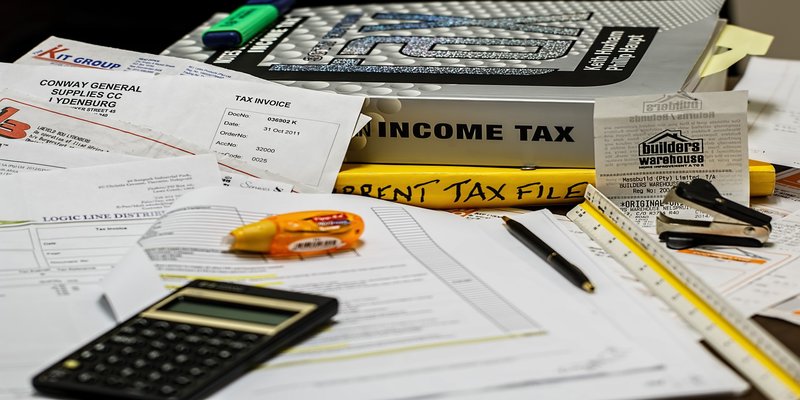6 Asset Allocation Strategies you should not ignore

There are many investment options that plague an investor. Wealth management keeps getting increasingly cumbersome with a wide array of investment products. It is at these times that your advisor would probably suggest allocating your assets in various asset classes to generate inflation adjusted returns. There is no singular asset allocation strategy. They are always customized according the needs of an investor which will maximize the return factor and minimize the risk factor. There is a popular saying that the right asset allocation determines your returns more than the individual investments in various funds.
Investors and advisors have been trying for years to perfect the art of allocating assets. There are no right answers and possible solutions in asset allocation in a given situation. Hence, while trying too hard to get it right, some of us make some common mistakes. This adversely affects the performance of the portfolio and the returns it could generate. Let us discuss some common asset allocation mistakes.
Interchanging Asset Allocation and Diversification
One of the common mistakes is thinking asset allocation and diversification are fundamentally the same ideas. It could not be farther from the truth. Asset allocation is allocating your assets in different asset classes. Diversification is the investment that you make within an asset class. For example if you have र 10 Lacs for investment you invest Rs 3 Lacs in Equity Mutual Funds, र 4 Lacs in Debt Funds, and keep the remaining र 3 Lacs as cash. You just allocated your assets to different asset classes. Extending the same example for diversification, the र 3 Lacs you invested in equities, र 50,000 has been invested in Diversified Equity funds, र 1 Lac in Large Cap Equity funds, र 25,000 Small and Mid Cap Funds and the remaining र 125,000 in Balanced funds. This process of investing within an asset class is called diversification.
An investor needs to be diversified as well as allocate the assets to reach the goals set out in the portfolio. Just because you have done your asset allocation does not mean you are diversified, you may have invested in all asset classes but in equities you may have invested only in Large Cap Mutual Funds or invested in Diversified Equity Funds of the same kind of four different Asset Management Companies. Thus, you have allocated Assets to equity mutual funds but not truly diversified as your exposure is limited to one particular category of funds. What you should do? You may invest in Mid and Small Cap Funds based on your risk profile or maybe ELSS Funds if you want to save taxes and in Hybrid Funds if your risk profile is moderate and so on. However, a word of caution here would be to not over diversify within the same asset class. For example – to diversify within Equity Mutual Funds, you need not buy 20 funds and invest in all categories. A selection of good performing 3-5 funds are enough. Check returns of top performing Mutual Funds across different categories in India.
Think International while diversifying
How about investing in Facebook, Google, Cognizant, Discovery Communication, Cisco, American Express and Intel etc.? If we talk about asset allocation and diversification in Indian context, chances are that we will limit our diversification within assets and products available in India. Remember, majority of the giant global businesses are not from India. They are mostly from US and other parts of this planet. As part of your diversification within Equity investing you could consider investing in International Funds offered by some Asset Management Companies in India. The other reason is that stock markets may behave differently across the globe at the same time and there could be instances when equity markets in India is not doing well, stock markets in other countries could do well and vice-a-versa. For example – In 2011, Equity Large Cap and Multi Cap Funds in India returns were around 24% negative, while International Equity Fund were only 5% negative during the same period. Again, absolute return in 2013 from large Cap and Multi Cap funds were around 4 – 6.50% while International Equity Funds returns were approx. 11.50%! Check the Top Performing International Equity Mutual Funds in India here.
Opting for Readymade Asset Allocation
There are many tools online which claims to give you the perfect asset allocation. The truth is, they cannot be perfect. As an investor when you opt for readymade asset allocation tools or charts you are not taking your personal goals into consideration. The only way to get your asset allocation right is to make a list of personal financial goals and then consult your financial advisor. On the basis of your goals, you need to customize your asset allocation. Hence, do not make the mistake of falling for asset allocation tools or any kind of readymade solutions because there is not any. They could be of some help, but as an investor you will have to do a little hard work to get your asset allocation right. Here is a quick readymade chart to help you understand asset allocation better.

Source: https://www.advisorkhoj.com/tools-and-calculators/asset-allocation
Being Rigid About Asset Allocation
Asset allocation is one of the most important aspects of building your portfolio. However, you have to keep changing your asset allocation as and when investment needs or goals change. Asset allocation is done to generate a certain percentage of return overall which is in line with your financial goals. Hence, when the goals change you change the asset allocation to fulfill those goals. A lot of investors are reluctant to change their asset allocation periodically making their portfolio stagnant and not customized to their changing needs.
For example, you have made an investment in infrastructure funds and you are approaching your 50s. Infrastructure funds are known to be the most volatile funds in the equity asset class and in your 50s you need a less risky and moderate return generating investment option. You could therefore, invest in Large Cap Mutual Funds and Diversified Equity Funds or increase your investment in debt instruments. Hence, in this situation a need to rethink your asset allocation arises. Hence, being rigid about asset allocation is going to do you more harm than good.
Being too Flexible about Asset Allocation
As an investor you are expected to be flexible to align returns with your changing needs. However, investors often tend to get carried away with new products and change investment products and shift investments affecting the balance of the portfolio. The investments in every asset class need a relatively long time horizon to generate substantial returns. For equity investments to generate substantial returns investors require a time horizon of at least three to five years or even more. A lot of investments have exit load and short term capital gain taxes if redeemed within one year. Hence, because of these clauses the ultimate profit generated will not be substantial. Therefore, there is no point in unnecessarily disturbing your portfolio and delay achieving your goals. Hence, before you make any changes in the asset allocation, be crystal clear on the reason of the change and the probable effects it could bring in the existing portfolio.
Constantly monitor the weightage
This is probably the most important point which gets ignored in asset allocation. Monitoring the weightage of each asset is related to the changing value or price of the various assets in your portfolio. You need to purchase more if the value of the asset is declining and sell or redeem if the value is increasing. In other words, you need to rebalance the portfolio with changing values of each asset. There is no fixed formula for this, but as a common thumb rule you may consider rebalancing whenever the values move 5 – 10% either way from its original cost.
Conclusion
Asset allocation is a cornerstone of investment. Unfortunately it remains an unexplored terrain for most investors. This lack of awareness either results in absence of asset allocation or mistakes in asset allocation, both of which could affect an individual and the achievement of their respective financial goals. Beware of such mistakes and take advice from your financial advisor before rushing to make any vital changes in your portfolio. Remember, it is a constant process and keep changing based on change in your goals, age, Life style, market movements and risk taking ability. It is always better to take expert advice than act on unreliable opinions.
Queries
-
What is the benefit of mutual fund STP
Aug 29, 2019
-
How much to invest to meet target amount of Rs 2 Crores
Aug 26, 2019
-
Can I achieve my financial goals with my current mutual fund investments
Aug 24, 2019
-
Can you tell me return of various indices
Aug 19, 2019
-
What would be the post tax return on different investments
Aug 18, 2019
-
Which Principal Mutual Fund scheme will be suitable for my retirement corpus
Aug 16, 2019
-
What is the minimum holding period for availing NCD interest
Aug 4, 2019
Top Performing Mutual Funds
Recommended Reading
Fund News
-
DSP Mutual Fund launches DSP Nifty Next 50 ETF
Dec 19, 2025 by Advisorkhoj Team
-
DSP Mutual Fund launches DSP Nifty 500 Index Fund
Dec 19, 2025 by Advisorkhoj Team
-
Kotak Mahindra Mutual Fund launches Kotak Nifty Next 50 ETF
Dec 18, 2025 by Advisorkhoj Team
-
The Wealth Company Mutual Fund launches The Wealth Company Gold ETF
Dec 16, 2025 by Advisorkhoj Team
-
Axis Mutual Fund launches Axis Gold and Silver Passive FOF
Dec 10, 2025 by Advisorkhoj Team














